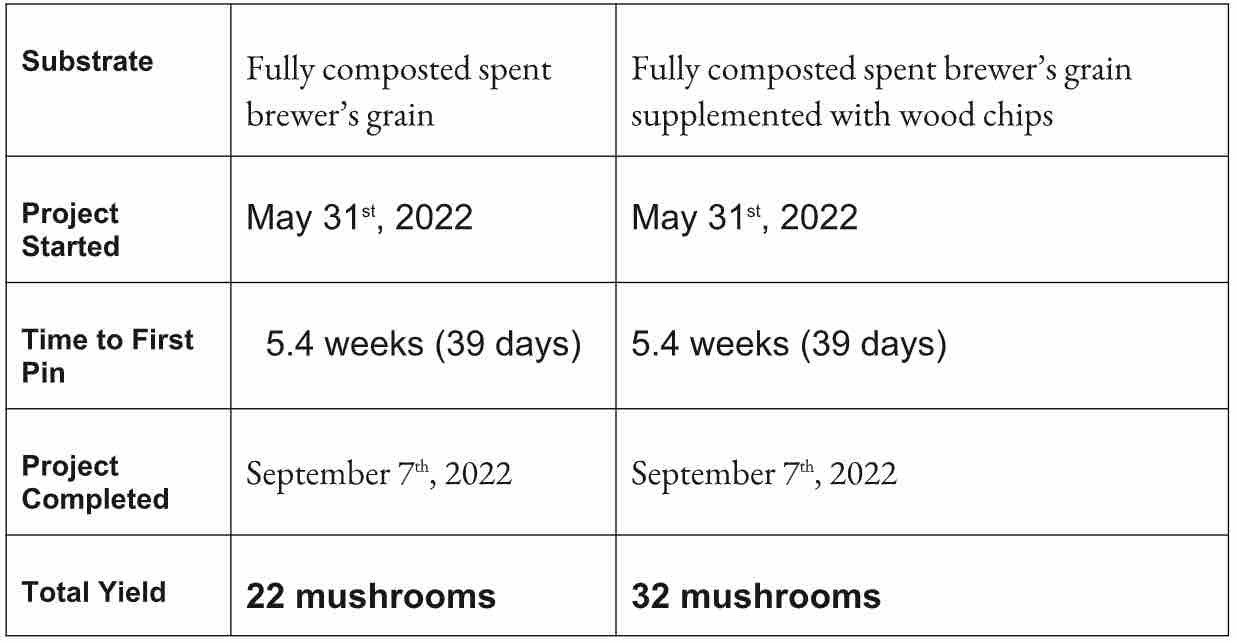Project Background
Our citizen scientist, Jennifer, wanted to explore the application of byproducts from her family's brewery, Wild Onion Brewery. After processing germinated and dried cereal grains (a.k.a. malt) for beer production, the solid residue leftover is known as spent brewer's grain. As the grain is taxed of its starches for fermentable sugars, the material becomes no longer viable for beer production but still holds nutritional benefits abundant in fiber, proteins, and phenolic compounds. Generally, this material has been used to feed livestock to alleviate environmental impacts from dumping spent grains on the ground causing spoilage and/or water pollution. If this trial is successful, mushroom cultivation opens another alternative as a waste management potential.
Project Description
Grown in agricultural zone 5b in two raised beds, sized 36" wide x 44" long x 8" depth, the spawn was planted in 5 rows with 6 columns about 4" deep on May 31st, 2022. One bed was filled with fully composted spent brewer's grain and the other bed was filled with a mix of the fully composted spent brewer's grain supplemented with wood chips, and both beds were cased with coconut coir for moisture management. Each bed used 5.5 pounds of Almond Agaricus sawdust spawn.
Observations

Results
Completed - Both beds started to pin around July 9th, 2022. The bed hosting fully composted spent brewer's grain cased with coconut coir produced 22 Almond Agaricus mushrooms in total by September 7th, 2022. The bed hosting fully composted spent brewer's grain supplemented with wood chips and cased with coconut coir produced 32 Almond Agaricus mushrooms in total by the same date. By healthy spawn run and successful yields, both substrates have demonstrated suitability for Almond Agaricus mushroom cultivation.